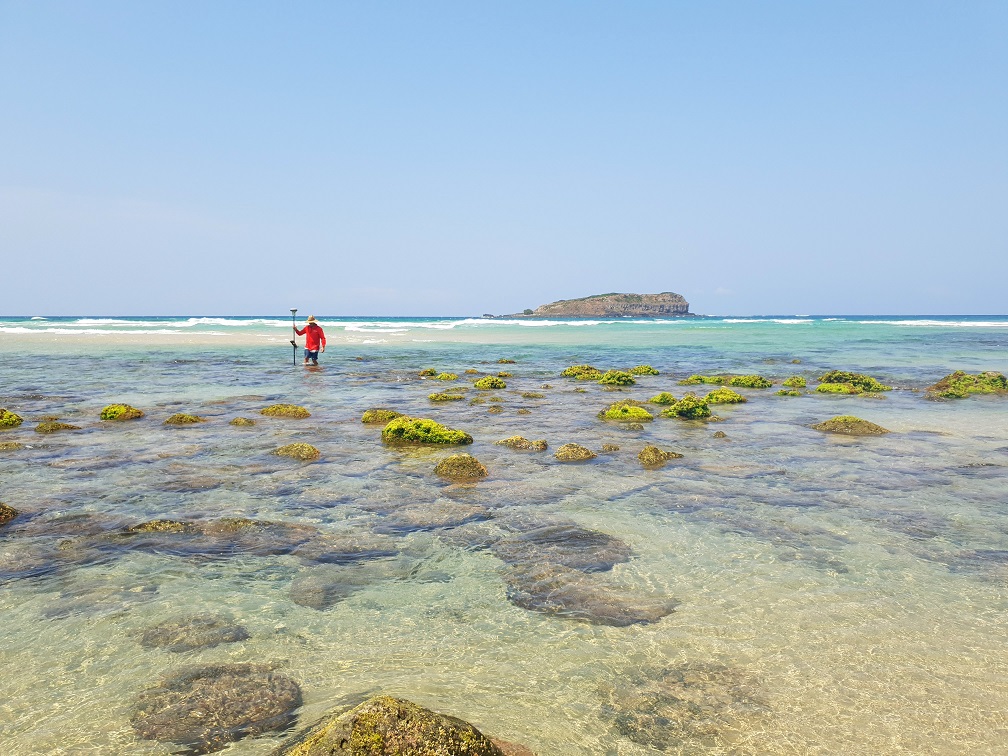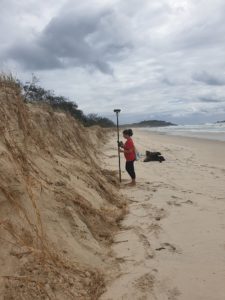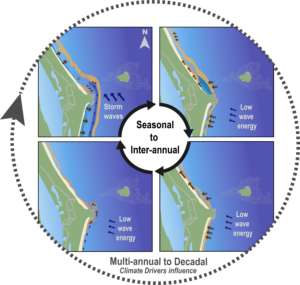
Griffith University researchers have revealed the cyclic processes that drive the movement of sand around coastal headlands and prevent beach erosion.

Published in the Science of the Total Environment, researchers from the Coastal & Marine Research Centre and the School of Engineering & Built Environment assessed 30 years of sand movement around Fingal Head (New South Wales, Australia), discovering that storm-driven waves and sediment availability facilitated sand bypassing headlands, both of which were susceptible to climate change.
"Powerful erosion events can occur all along the Eastern Australia Coastline when conditions prevent migrating sand from bypassing headlands," said PhD Candidate, Ana Da Silva from the Coastal and Marine Research Centre at Griffith University.
"This study of Fingal Head gives us a better understanding of the natural process of sand migration around headlands and its interaction with weather, waves, and climate drivers such as El Niño/La Niña and how these change over seasons, years and decades.
"Fingal headland is the last obstruction to sand migrating north along the Eastern Australia Coast before the Artificial Tweed Sand Bypass, which pumps sand to the southern end of the Gold Coast. Failure of sand to bypass Fingal could have consequences for the management of Gold Coast beaches and potentially lead to erosion."
Partnering with the NSW government, the researchers physically mapped the sands movements over a year and a half, and also analysed more than 30 years of satellite images to construct an unprecedented dataset to investigate the processes driving sand migrating around headlands.
"We mapped the shape and depth (topography and bathymetry) of the beach and the surf zone seafloor using a very accurate GPS unit and fish finder mounted to a research jet-ski," said Dr Tom Murray, research fellow from the Coastal and Marine Research Centre.
"The Coastal and Marine Research Centre research jet-ski is the only research one of its kind in Queensland and our field team has hundreds of hours experience operating in the surf zone collecting data where breaking waves and surfers make this data collection more challenging."

For the first time, researchers discovered that the movement of sand bypassing Fingal headland occurred via two separate processes.
"The sandbar-driven bypassing scenario requires a storm event with high wave energy from the southeast, typical of cyclone conditions from late summer to autumn, which builds a sandbar system and over seven months completes the full sand bypassing cycle," Ms Da Silva said.
"A quicker bypassing cycle happens over a few months when there is a large volume of sand available to the south – it simply leaks around the headland following persistent low energy wave conditions, which tends to occur around spring to early summer."
The three decades of data show that La Niña years weren't favourable to the sand bypassing the headland, and lead to erosion of the beaches to the north and south. Alternatively, El Niño years triggered one of the three cycles of sand bypassing Fingal Head that lasted around 5-6 years.
"Predicted climatic changes will alter the frequency and direction of storm-driven waves on the Eastern coast of Australia, and thus the rate of sand bypassing around Fingal and other headlands," Ms Da Silva said.
"Understanding the link between the headland bypassing rates at Fingal Head and large-scale climate drivers is crucially important to be able to forecast and manage the process in the future."






